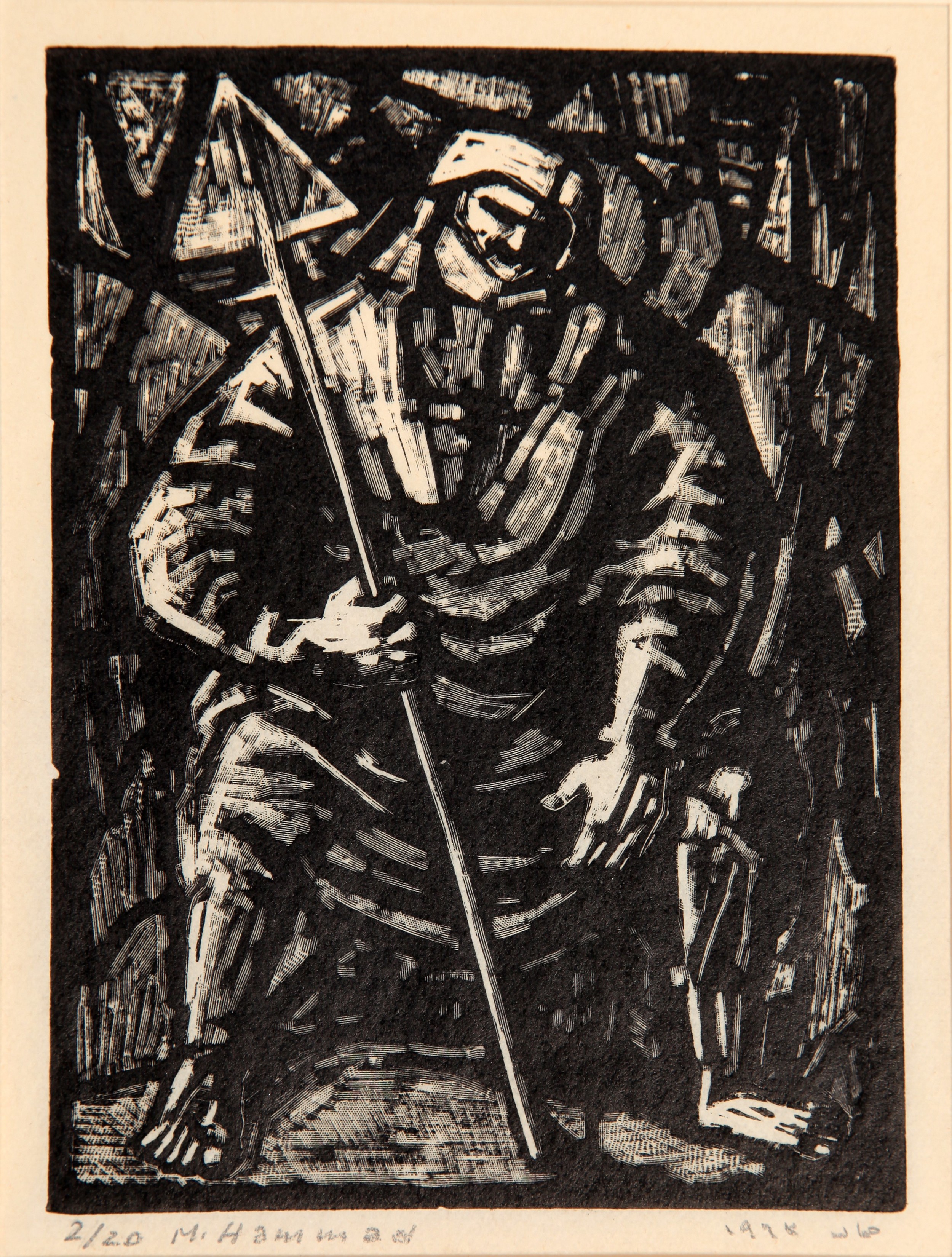
Rapallo . 1954 . راباللو
Zincograph. 1/5
24x19.5 cm
Signed lower left,right.

Scene . 1956 . منظر طبيعي
Zincograph. 1/5
18.5x14 cm
Signed lower left,right.

Roma . 1956 . روما
Zincograph. 4/10
18.2x21.7 cm
Signed lower left,right.

The Family . 1961 . العائلة
Linoleum print. 1/10
21.5x14.5 cm
Signed lower left,right.

After Harvest . 1962 . بعد الحصاد
Linoleum print. e.d.
39.8x31.8 cm
Signed lower left.
Intergraphic price. Berlin, Germany. 1976.
National Museum in Damascus, Syria.

Horse . 1962 . حصان
Lithograph.
18.6x15 cm
Signed lower left.

The Lovers . 1962 . المحبان
Linoleum print. 1/10
18x11 cm
Signed lower left,right.

Farmers . 1962 . قرويون
Linoleum print. 1/10
20x13 cm
Signed lower left,right.

Motherhood . 1963 . أمومة
Zincograph. 2/10
25.6x17.5 cm
Signed lower left, right.

Resting In The Desert . 1963 . استراحة في الصحراء
Linoleum print. 2/20
48x37 cm
Signed lower left,right.
National Museum in Damascus, Syria.

Omar Ibn Alkhattab . 1963 . عمر بن الخطاب
Zincograph. 1/10
30x22 cm
Signed lower left.

Motherhood . 1963 . أمومة
Zincograph. 4/5
16.5x11.5 cm
Signed lower left,right.

Composition . 1963 . تشكيل
Zincograph. 1/10
17.2x11.6 cm
Signed.

The Resting Peasant . 1963 . راحة الفلاح
Linoleum print. 2/20
15x10.4 cm
Signed lower left,right.

Calligraphy . 1965 . كتابة عربية
Lithograph. e.d.a.
23.9x19 cm
Signed lower right.

Composition . 1966 . تكوين
Linoeum print. e.d.
36.1x21.2 cm
Signed lower right.

Calligraphy . 1966 . كتابة عربية
Lithograph .
26x18 cm
Signed lower right.

Calligraphy . Albasmala . 1982 . البسملة
Linoleum print. 8/20
50.3x34 cm
Signed lower right.

Calligraphy . Salamon Kawlan Min Rabin Raheem . 1984 . سلام قولا من رب رحيم
Linoleum print.
41x36 cm
Signed lower left.

Calligraphy . Bism Allah . 1984 . بسم الله
Linoleum print.
36x26 cm
Signed lower left.

Calligraphy . Bism Allah . 1984 . بسم الله
Lithograph.
41x36 cm
Signed lower left.

Calligraphy . Salamon Kawlan Min Rab Raheem . 1988 . سلام قولا من رب رحيم
Linoleum print. 1/5
13.8x9.9 cm
Signed lower left,right.
Last work before death.





















